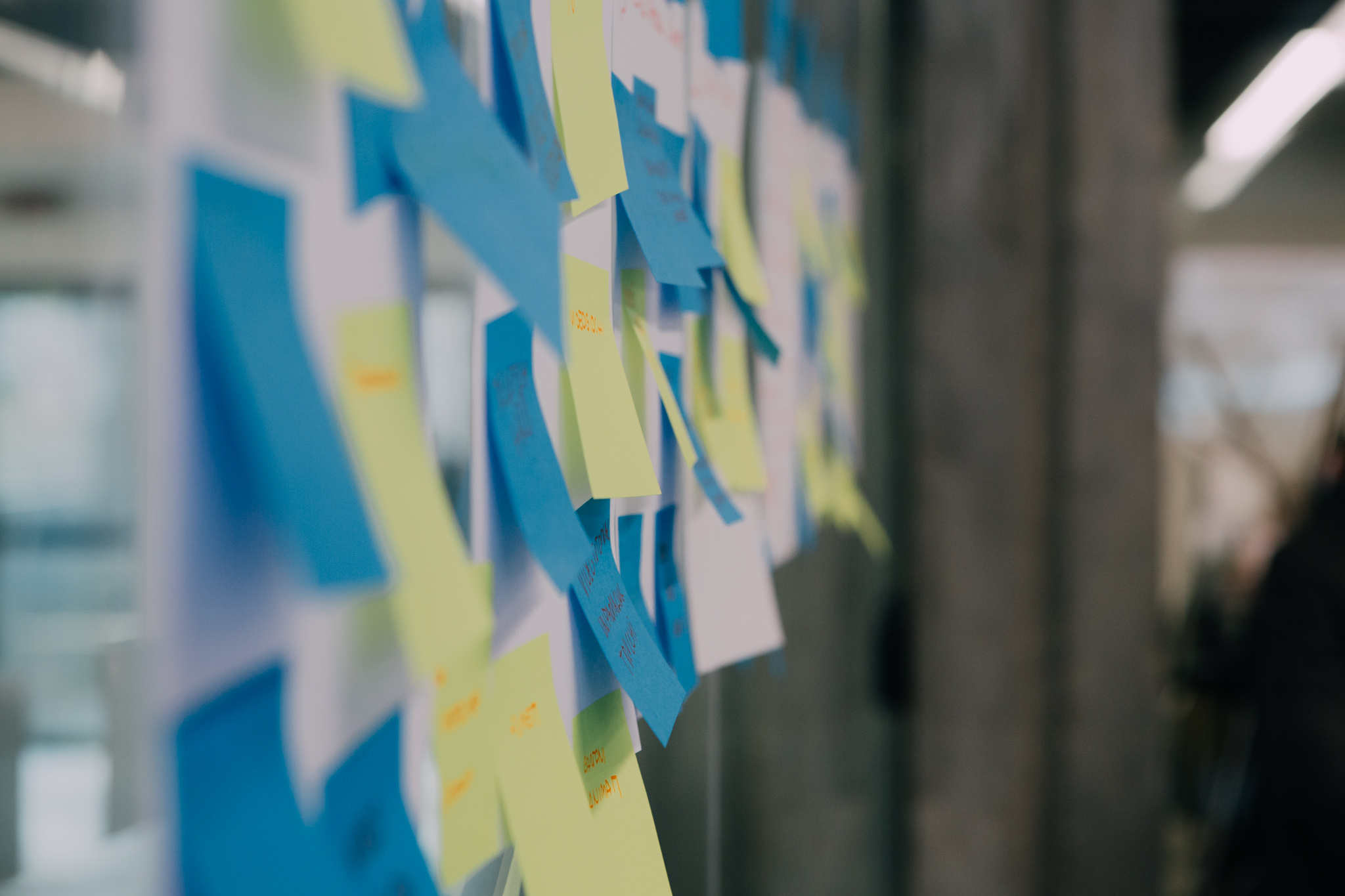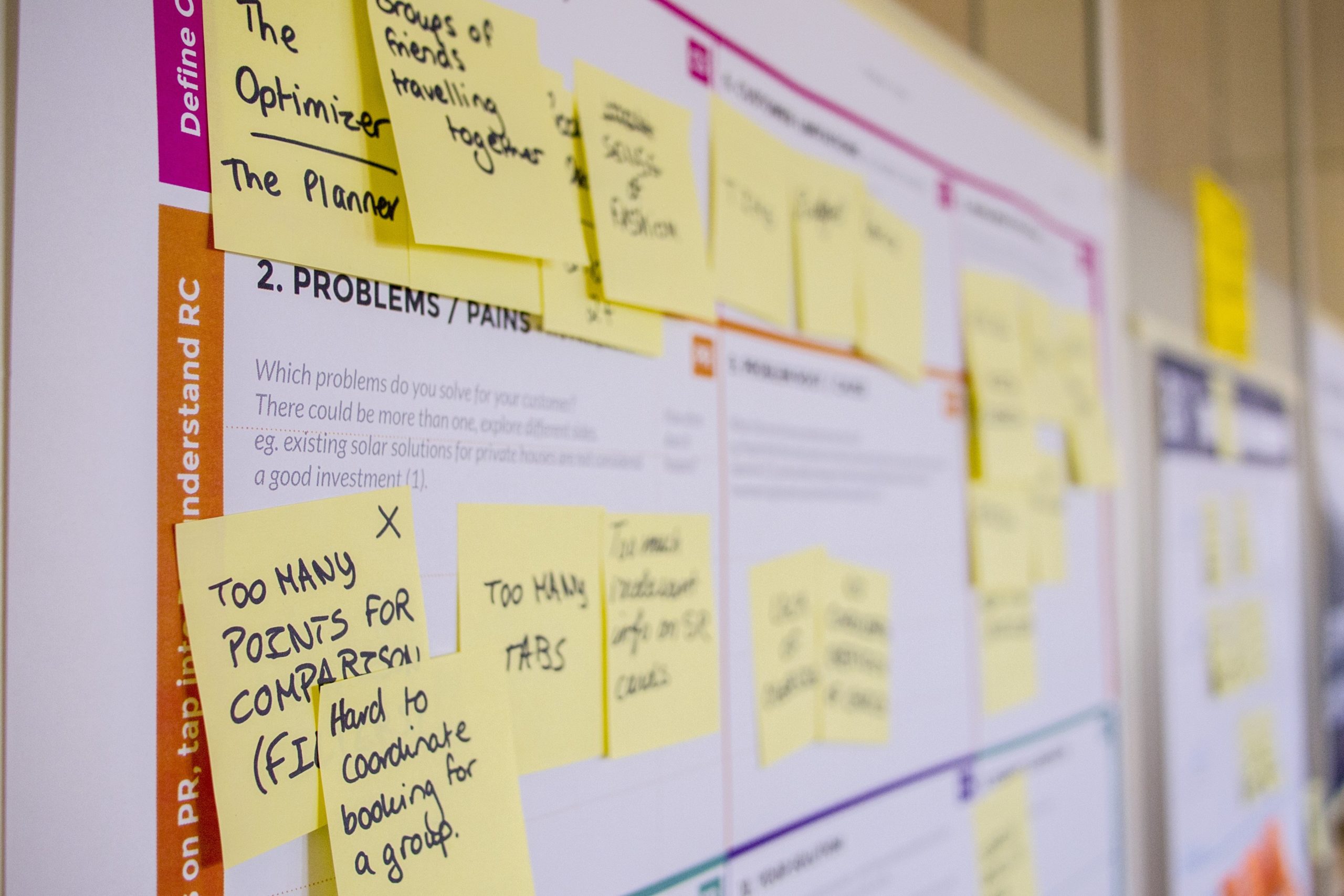- Home
- Business Innovation
- A comprehensive guide to Lean & Agile methods: definitions, tools, books and websites
A comprehensive guide to Lean & Agile methods: definitions, tools, books and websites


In the corporate world managing processes, teams and projects is increasingly demanding. The design phase, the production of goods and service delivery are all required to be optimized in order achieve the goals of speed, simplification and efficiency.
The Lean and Agile philosophy is at the heart of the processes
The terms Lean and Agile are often used together. They are actually two different conceptual approaches that are then applied in process methodologies, increasingly widespread in the field of project management. They have many elements in common but also some differences.
What is Lean Management?
The objective of Lean principles is the "lean management" of a process, its application maximizes value reducing waste to the minimum. In other words, we want to create better value for the customer by using fewer resources in terms of time, raw materials and costs. Lean started as a production process, but today the Lean approach is widespread both in the world of production and in the world of services.
The history of Lean
In the aftermath of the Second World War, Japan faced a severe shortage of resources and it needed to rebuild its industry. The United States sent experts to help rebuild the country's production capacity. Among them was W. Edwards Deming, a management consultant whose ideas on quality control were welcomed by companies. Toyota thus began to apply the concept of Just in Time (JIT). This technique aims to increase efficiency by reducing the quantity of materials used in production by optimizing the supply of materials immediately before they are needed for the next stage of process. The JIT method is not only used in production: the technique is applied in any situation where a supplier delivers materials within a timeframe determined by customer demand. JIT's success relies on knowing how to synchronize and coordinate the production process so that materials and products are where they need to be, at the right time. Taiichi Ohno, an engineer in the employment of Toyota, is widely regarded as the creator of lead management, as used by the Toyota Production System (TPS). It aims to improve productivity, reduce costs and stocks, which are managed based on product demand.
The advantages of applying Lean Management
The immediate benefits of this methodology are reduced delivery times, because the stages that do not add value are eliminated, and operating costs are also reduced. Using Lean principles, we focus on eliminating unnecessary elements, such as stocks, workspace and human resources, to increase efficiency and reduce costs.
Reducing waste improves the quality of products and services to the benefit of the customer. Lean is in fact a customer-focused approach that improves the quality of the final product. The consumer also benefits from better service and customer care procedures, a balance between supply and demand is maintained.
Another important advantage of Lean can be found within the company. Lean thinking leaders engage staff in the process of improvement. In this way, staff satisfaction and loyalty are improved due to the results achieved. Motivated employees, a key factor in Lean Manufacturing, are generally more flexible and benefit from a safer work environment where risks have been reduced.
What is the Agile method?
The Agile method is a planning model that makes teamwork functional. Agile distributes responsibilities among the team members and manages the organisation of the work of each team.
The history of the Agile model
The Agile methodology is more recent than Lean. It started as a software development concept in the early 2000s and has been extended to other fields. It diverges from the classic "waterfall" model, which prescribes a well-defined sequence of actions to be carried out by various parties before the production of a product or service starts.
The theorists of the "Agile Manifesto" have based it on four principles:
- Emphasis should be more on individuals and interactions rather than on processes and tools
- Working software is more important than complete documentation
- Collaboration with the client is more important than contract negotiation
- The process should respond to change rather than be tied to a plan.
The advantages for companies of applying the Agile method
The Agile method introduces a Project Management method that allows companies to implement a project in phases, called "sprints", each of which is focused on a new area of work. Usually the customer is continuously shown the work carried out to ensure their approval. It is therefore possible to make changes very quickly, thus avoiding the failure of a completed project. This increases the efficiency of the team and thus the productivity.
The adoption of the Agile method entails changes in the organisational structure of teams, in the planning of work and in the culture of the company. Agile allows companies to be responsive, cost effective and time efficient, thus giving added value to the business.
The application of Lean and Agile principles
Agile and "lean" thinking have become very widespread among companies over the last 20 years. This is confirmed by the 12th Report on the use of Agile principles, published by Collabnet in 2018, drawn up using data from questionnaires sent to about 1,500 companies of all sizes and sectors, in all continents, some with less than 100 employees, and others with more than 20,000 employees. The report shows that 97% of the companies surveyed said they had used the Agile method in their companies. 88% of them have introduced sprint planning, which typically lasts from one to four weeks. The advantages reported by the companies are considerable:
- 57% in customer satisfaction
- 55% in certain delivery times
- 53% increase the value of the company
- 47% improvement in product quality
98% of the companies surveyed also reported that Agile had increased the success of its products, while 74% reported that the adoption of Agile principles had made more than half of its products more successful.
Lean principles are also widespread. Lean “thinking" is widely used in the automotive sector and also in lean project management and in the world of start-ups. According to some experts, in 2012 Dropbox, the cloud storage tool, quickly increased its users from 150,000 to more than 4 million because Lean thinking was used to manage Lead projects. Currently the storage system has 500 million users and is widely used, as is Google Drive.
How the theories of Lean and Agile differ
The Lean approach is focused mainly on reducing waste and aims to eliminate from processes anything that does not give any benefit to the customer and therefore to the company. Taiichi Ohno, the Lead Thinking theorist, identified waste as the so-called MUDA, that is the phases and activities that use resources but do not add value to the product and therefore do not give benefit to the customer.
Agile, which was created above all to speed up software development and make it more efficient, instead aims to eliminate the "waterfall" process, which commits at least 40% of development time to identifying requirements, in a model in which the specifications are defined during the course of software development. The approach is iterative, since the solution is reached through continuous improvement of the preceding phase, it is incremental, i.e. applied only on the parts still to be improved.
A case study: Lean and Agile and Getty Images
Several years ago, Getty Images, one of the most popular platforms for buying images, had to face the challenge of moving from an inadequate technology platform. Processes and technologies were outdated, and managers had to replace its in house platform, which was slowing down the success of e-commerce.
Getty Images thus had to rebuild from scratch its main website and all the primary back-end processing systems. Library management, the tags of each image and the internal search engine had to be completely replaced by a new platform. It was essentially a matter of replacing the entire process underlying a million-dollar business, consequentially it involved some risks.
The "Web Vision" project was thus developed, with more than 20 project teams and 150 people to coordinate. In three years, one more than planned, the new platform was launched. It was immediately apparent that the results were very poor. The site was extremely slow from the end user's point of view and many of the features included did not meet the user's needs. Customers were completely dissatisfied, and many moved to image banks run by competitors. Company management decided to find a really innovative solution. Managers looking for better ideas attended a Lean & Agile conference in January 2008 and were persuaded to use this methodology to manage their problem.
The early stages of Getty Images' new project
The initial approach identified bottlenecks in the methodology of the development of the inadequate platform, more than a month was required to modify a single line of code, between evaluations and approvals from management. At the time, the many departments had a Vice President, technicians, project managers and quality consultants, with cumbersome and inefficient cascading processes.
It was therefore decided to introduce the Scrum method - described later - in the team of the only Manager who had experience of the Agile method, replacing the "waterfall" development process with this more efficient method. The team in question was interdisciplinary, made up of developers, reviewers and a project manager. Targets and deadlines were set, with daily meetings to streamline the process.
At the end of the first sprint, the team presented the first version of the software to corporate stakeholders and executives. Everyone was enthusiastic about the effectiveness of the new search engine, which was developed in just one month.
The research group continued to work with objectives set every four weeks and with monthly presentations. At the same time, other development teams began to take part in the demonstrations, which were also increasingly attended by executive managers, program directors and anyone interested in knowing what was happening in the program.
Scrum and Agile, thanks to the recruitment of a second expert in these methodologies, had taken root at Getty Images. The executive team was finally ready for some major changes in its systems. In January 2008, Getty Images held an in-house workshop and all team leaders welcomed the new working practices and principles.
The problem that then emerged was that up to that point, the teams had been working in a cascade. It was therefore necessary to implement the principles of Lead & Agile. Independent, cross-functional teams had to be created. All the new teams were composed of developers and testers, led by a single manager. Each team was assigned the development of a particular product, vertically. Project managers became product managers. The weekly scheduling of sprints and training on Lean and Agile processes were key to the transformation of the teams and the success of the platform they developed.
Currently Getty Images continues to manage its business using Lean & Agile principles and Scrum and Kanban methodologies, which were first used in Toyota. The adoption of these methods has changed the work flow which was divided in weekly sprints into a continuous process of development.
The most popular Lean & Agile methods
While Lead and Agile are two different theories, they are linked to frameworks used to apply their principles.
Kaizen
It is impossible to talk about Lean without introducing Kaizen, the reference operating methodology. The Japanese term 'kaizen' means 'improvement'. In industrial and product development Kaizen stands for continuous improvement. It must involve the entire company structure, including management and all staff. The approach was not generally adopted in Western companies, where processes were streamlined at a slower pace. Some product lines could in fact have been operational for years, without any increase in efficiency and then modified with significant investment and technological innovations. The Kaizen method, on the other hand, requires the active involvement of the employees, who are required to develop a critical approach and continuously review the processes entrusted to them.
Scrum
Agile thinking is complemented by the Scrum method. The term refers to method of restarting play when rugby teams pack closely together in a sort of collective embrace. Scum is a fast and effective way to add value to a project. It ensures maximum transparency and collaboration both within a working group and between teams and is applicable to projects in all sectors. It is essentially a matter of adjusting collaborative and creative effort through a methodology that directs it and shares it.
Scrum is based on self-run teams that work by splitting the work up into very short cycles called sprints. In essence, a project backlog is created, that is a list of problems to be solved, and a sprint backlog, which covers the activities to be completed in the next sprint, and a DoD, acronym for Definition of Done. The Dod identifies criteria against which a work phase can be considered to have been concluded. Progress of work is managed via the Daily Scrum, a daily routine of about 15 minutes that is used to plan the working day based on the results of the previous day.
Popular tools for applying Lean principles
Lean thinking can be applied using tools created specifically to facilitate its use. Among them:
Trello
Developed by Fog Creek Software, it is a free tool. Ideal for students and teamwork, Trello provides an overview of the state of play in planning, schedules and activity flow. You can insert members' Avatars and work together in real time. Trello allows you to send messages to team members and generate surveys, it has an app and integrates easily with Dropbox and Google Drive.
LeanKit
Trello's main competitor helps to manage projects and internal team discussions. It is divided into work areas and offers a bulletin board that allows you to move each box, color it, enter a delivery deadline and it has many other features. There is a 30-day free trial, then use of the tool is subject to payment.
The best tools for the Agile method
The application of the Agile method involves the use of project management tools. There are many tools available in this field. These are widely used:
Atlassian JIRA
This is one of the best project management tools used by Agile teams. Customizable Scrum Boards are available that can be adapted to each team's workflow. These virtual boards allow you to view all your work in a sprint, managing backlogs - things to do - and deadlines. Sprint activities are shown in real time with the help of flow charts, graphs showing the speed of work and over 1,000 additional components and the reference apps can be integrated into it.
Asana
Asana is a platform for project management. The software is quite intuitive and replaces internal emails with a system of to-do lists and tasks broken down by project. Asana facilitates conversations between users by using emoticons, with links and files in Dropbox and Google Drive, and updates being sent without using email or chat. The tool is subject to payment.
The best guides and books on Lean management
There are numerous texts on the Lean approach, the principles of which were developed decades ago. Of the recent ones these have had good reviews:
1. Gemba Kaizen. An operational approach to continuous improvement strategies. With accounts of the Italian companies that have been successful, author: Masaaki Imai, publisher FrancoAngeli
The publication describes how Kaizen is introduced into a company. According to the author, the concept of continuous improvement can be adopted as if it were a real technology in its own right. In its second edition, the publication offers ideas for business growth by suggesting a roadmap that can bring improvements on a daily basis. It gives examples of international companies and tells the story of the growth of some Italian companies that have applied Kaizen as an accelerator for development.
2. Agile project management. Provides an overview of the main Agile methodologies such as Scrum, XP, DSDM, Lean Software Development and a PMI-ACP certification exam guide, author: David Corbucci, publisher FrancoAngelii
The book aims to illustrate the most effective Agile frameworks and methodologies and to create a product that is of value to its users. The advantage is to streamline project phases and to model them on the needs of the customer. Agile Project Management uses project management methodologies from all fields. The publication describes the support media for Scrum, DSDM (Dynamics System Development Method), EVO (EVOlutionary Development), Crystal Clear, Lean Software Development, and some others.
Reference sites for Lean and Agile
There are, of course, specialized websites that focus on the principles and applications of the Lean method. Here are the best:
1. Lean.org
The website of the Lean Enterprise Institute (LEI), a US non-profit association, whose mission is to disseminate Lean thinking and methodologies. LEI conducts research, offers educational workshops, publishes books and ebooks, organises conferences and shares practical information on the Lean approach. The site is supported by a community that appreciates the materials offered on the site and during events.
2. Scruming.com
The website, managed by one of the creators of Scrum, has numerous online resources allowing users to be updated on the methodology. Articles, guides and videos are published on the site which is very well maintained. A blog worth following.

Don't Waste Your Talent. Turn It Into a Career With a Course That Fits Your Needs!
Keep reading

Is Education Technology the key to closing the IT Skills Gap?

9 Successful Tips For Enhancing Your Developer-Designer Collaboration

Team Building: how to really focus on people

